- Buy Oversold: When the OBOS < -70
- Buy Protected 70 when the OBOS crosses over -70
- Buy Protected 30 when the OBOS crosses over +30
- Buy when the MF crosses over 0%
Past studies have shown that when a Buy Oversold signal is produced, it is better to buy the stocks from the weakest sector and among them select the stocks with the weakest price relative strength (Price RS.)
However, on a standard Buy signal, it is better to buy stocks that show a strong price RS and belong to a strong sector.
The question is: when do we transition from buying the weakest to buying the strongest stocks? Since buying weak stocks can ride a wave of short covering, we can conclude that the Oversold character of the market should determine the type of stock to buy.
The tables below show the summary of a stock selection analysis that depends on the level of the OB/OS indicator of the 20DMF. This analysis is one element of a stock selection process that we plan to start soon.
The first Table shows the results from buying the strongest stocks, while the second table shows the results from buying the weakest stocks. Note that the stock selection process is reset after 5 days if the 20DMF Buy signal stays valid. This means that every 5 days, we search for the stocks with the best settings.
There are four levels of OB/OS: Below -50, between -50 and 0, between 0 and +80, Above +80.
The combination of the two tables shows that:
- Below -50, it is better to buy the weakest stocks, because the market is in Oversold mode.
- Between -50 and 0, it is difficult to make money. Buy signals are weak and prone to failure. The market is not in oversold mode anymore and not yet in an uptrend. Stay in Cash.
- All the strong uptrends occur when the OBOS is between 0 and +80. The tables show that buying the strongest stocks leads to better returns.
- Above +80, the overbought character of the market becomes evident and it makes sense to short the strongest stocks (even during a buy signal.)
A few other points on the Tables below:
1. Most trades occur either in Oversold mode or during a strong uptrend.
2. Even though the Oversold mode trades offer a better return, the sheer number of trades that occur during a strong uptrend dictate that most of the portfolio gain will take place when buying leading stocks.
3. The gains are calculated on 5 opened days. 1% gain over 5 days means that in theory, the yearly return would be 1% * 220 / 5 days = 44%
4. We can see that this stock-picking strategy yields more than twice the S&P500 returns over the same period.




